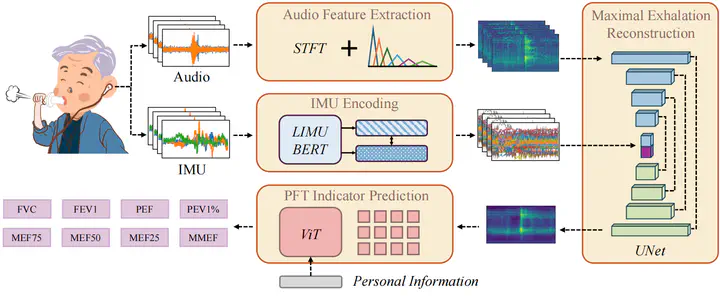
Abstract
Conventional pulmonary function tests (PFTs) are important but costly. Hence, prior research has proposed IoT sensor-based solutions to facilitate cost-efficient, at-home PFT. However, these solutions require the subject to perform maximal exhalations, a task often challenging without supervision, compromising test accuracy. In response to this challenge, this study introduces EasySpiro that, for the first time, uses non-maximal exhalations to measure PFT indicators. This is challenging since PFT indicators are only defined for maximal exhalations, and there are no guidelines to derive them from submaximal exhalations. To address that, we observe that pulmonary deficiencies affect all types of breathing, where the underlying pulmonary deficiency should be the same under different breathing efforts. Leveraging this insight, we design a reconstruction model to predict the ideal maximal breathing patterns based on submaximal ones and utilize these reconstructions for PFT. Furthermore, since the body dynamics reflect the exhalation effort, we use self-supervised learning techniques to encode body dynamics into breathing effort representations to guide the reconstruction process. We integrate these designs into earphones with microphones to measure breathing patterns and IMUs to measure body dynamics. We collaborate with a hospital and develop a dataset from 50 patients with various diseases to evaluate EasySpiro’s performance, which shows an accurate prediction of PFT indicators based on non-maximal exhalations with an error rate of 7%. In addition, we open-source the collected dataset to encourage future research.